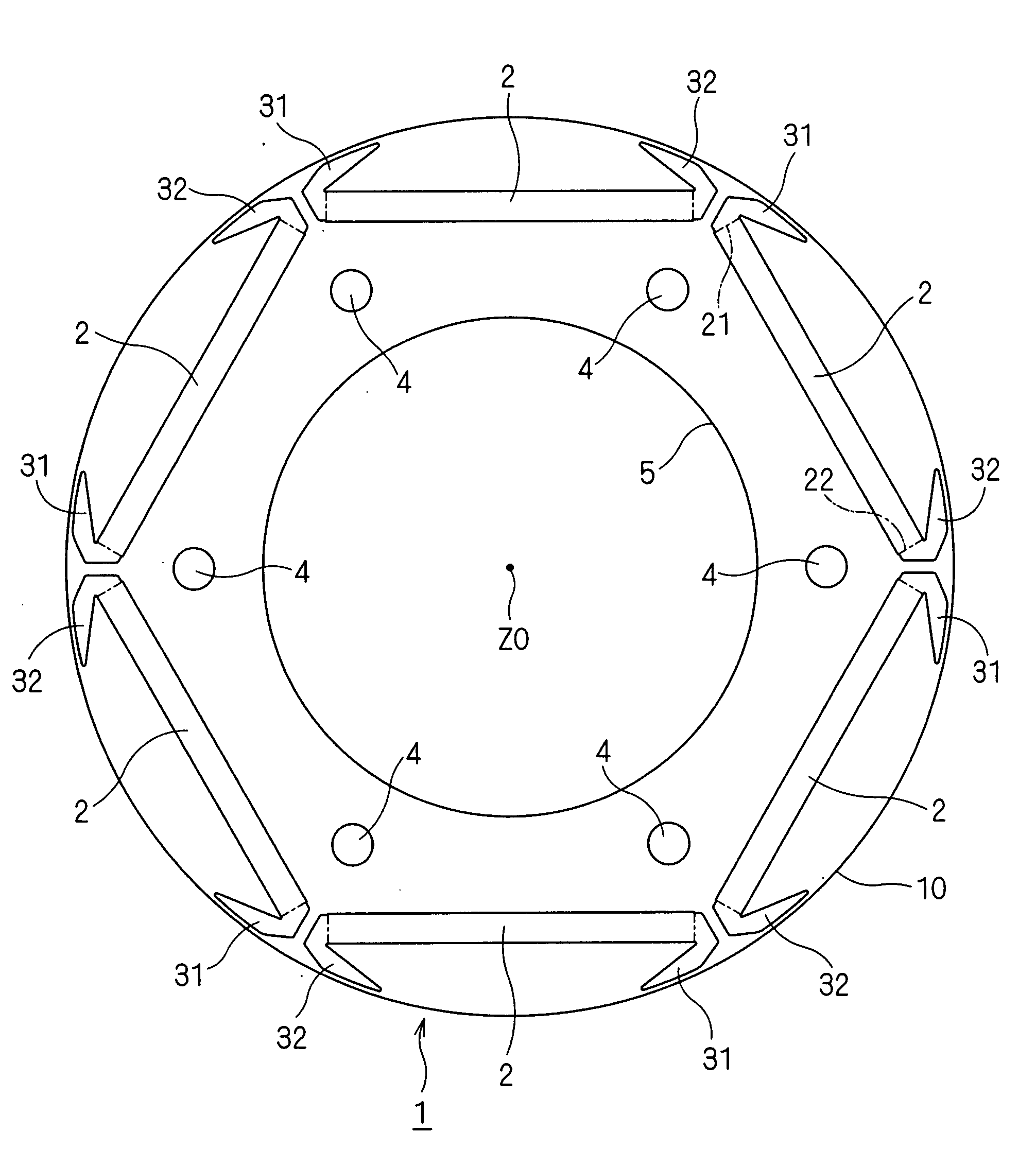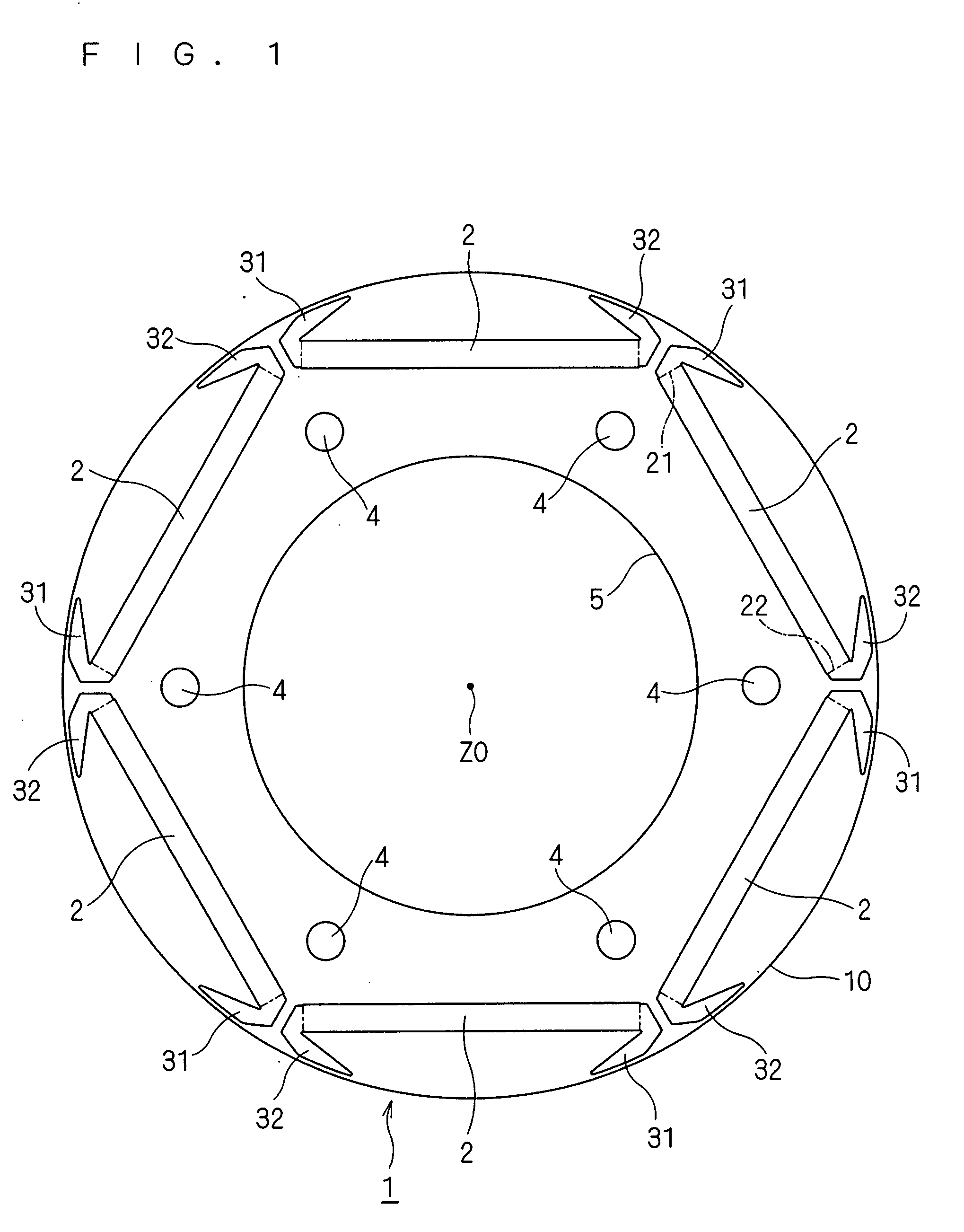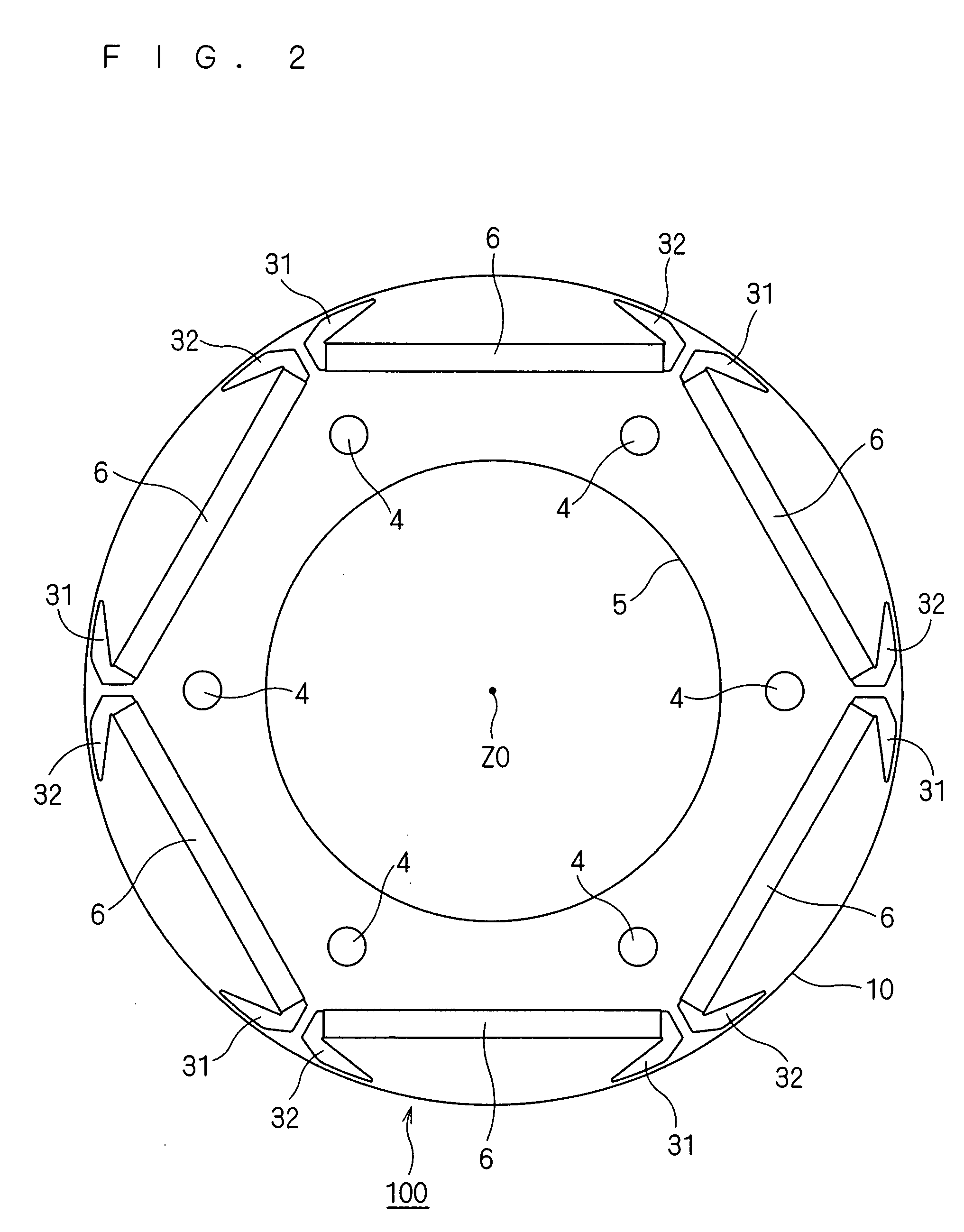Magnetic Member, Rotor and Motor
a rotor and magnetic member technology, applied in the direction of rotating magnets, synchronous machines with stationary armatures, dynamo-electric machines, etc., can solve the problems of vibration and noise, unfavorable supply of skews, and different magnetic fluxes between the magnetic poles, so as to reduce the ripple effect of torqu
- Summary
- Abstract
- Description
- Claims
- Application Information
AI Technical Summary
Benefits of technology
Problems solved by technology
Method used
Image
Examples
first embodiment
Description of Basic Configuration
[0068]FIG. 1 is a plan view showing the structure of a magnetic member 1 according to a first embodiment of the present invention. The magnetic member 1 can contribute to an embedded magnet type rotor, as will be described later. The magnetic member 1 may extend in the direction perpendicular to the sheet of drawing, or may be thin in the direction perpendicular to the sheet of drawing. In the former case, it may be formed of, for example, iron dust core to be employed as the core of a rotor. In the latter case, it may be formed employing, for example, steel sheets, which are stacked one upon another to be employed as the core of a rotor. In that case, FIG. 1 can be understood as a sectional view of that core. The center Z0 corresponds to a rotation axis of the core of the rotor.
[0069]The magnetic member 1 has a periphery 10 showing an annular shape, and the case in which the periphery 10 shows a circle as an outer periphery is illustrated here. How...
second embodiment
[0125]FIG. 20 is a sectional view partially showing the structure of a rotor 100 according to a second embodiment of the present invention. Of course, a structure in which the field magnets 6 are omitted from that rotor 100 can be understood as the magnetic member 1 according to the present invention.
[0126]The rotor 100 in the present embodiment features changing the distance between the second portions 312, 322 and periphery 10 in a curve in the circumferential direction, and is similar to the technique described in the first embodiment except this point. Also with such structure, the magnetic member is increased in thickness in the vicinity of the border of magnetic poles of the rotor explained in the first embodiment, so that the difference in thickness of the magnetic member in the radial direction between the border and center of magnetic poles can be reduced. The torque ripple can thereby be reduced, similarly to the first embodiment. Of course, the asymmetry of the configurat...
third embodiment
[0127]FIG. 21 is a sectional view partially showing the structure of a rotor 100 according to a third embodiment of the present invention. Of course, a structure in which the field magnets 6 are omitted from that rotor 100 can be understood as the magnetic member 1 according to the present invention.
[0128]The rotor 100 in the present embodiment features communicating a pair of third portions 313 and 323 adjacent to each other respectively belonging to adjacent field magnet through-holes 2, and is similar to the technique described in the first embodiment except this point. Also with such structure, it is apparent that the operations and effects explained in the first embodiment can be obtained. Further, in the structure shown in the second embodiment, the third portions 313 and 323 may be communicated with each other.
[0129]However, it is desirable that the third portions 313 and 323 be adjacent separately in terms of mechanical strength in the vicinity of the gaps 31 and 32, that is...
PUM
 Login to View More
Login to View More Abstract
Description
Claims
Application Information
 Login to View More
Login to View More - R&D
- Intellectual Property
- Life Sciences
- Materials
- Tech Scout
- Unparalleled Data Quality
- Higher Quality Content
- 60% Fewer Hallucinations
Browse by: Latest US Patents, China's latest patents, Technical Efficacy Thesaurus, Application Domain, Technology Topic, Popular Technical Reports.
© 2025 PatSnap. All rights reserved.Legal|Privacy policy|Modern Slavery Act Transparency Statement|Sitemap|About US| Contact US: help@patsnap.com



